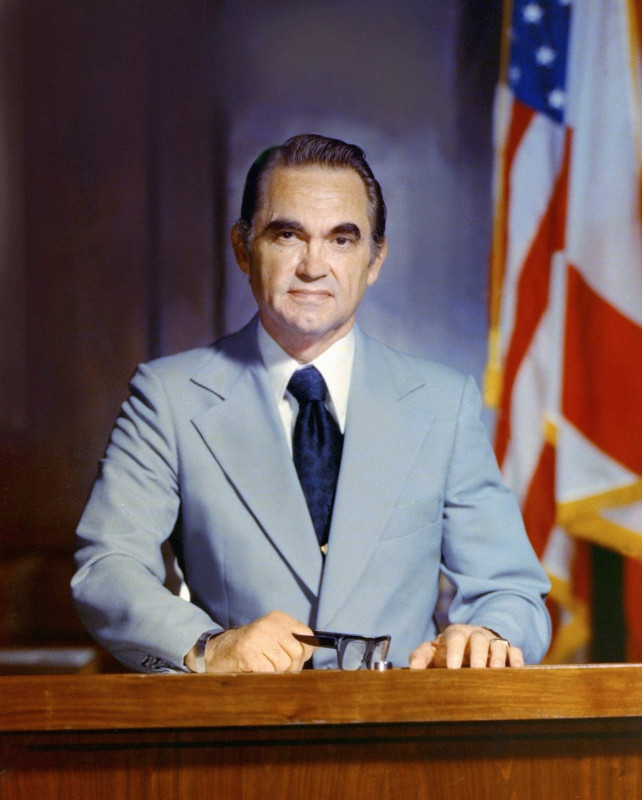Controversies are a part of history. Explore the biggest scandals linked to George Wallace.
George Wallace was a prominent American politician, best known as the four-term governor of Alabama. Initially a staunch segregationist, he gained national notoriety for his defiant stance against the Civil Rights Movement, symbolized by his 1963 inaugural address vowing "segregation forever." He unsuccessfully ran for US President multiple times, including a significant third-party bid in 1968. Later in his career, Wallace publicly renounced his segregationist views. Despite his controversial legacy regarding race, Wallace also focused on economic development initiatives during his time as governor.
1948: Avoiding race-related discussions
In 1948, unlike Strom Thurmond, George Wallace generally avoided race-related discussions, focusing instead on criticizing hippies and "pointy-headed intellectuals." He denied being racist.
1958: Granted Probation to Black People
In 1958, as judge, George Wallace granted probation to some Black people, which may have negatively impacted his chances in the 1958 gubernatorial election. This highlights a complex aspect of his early career.
1959: Cited for Contempt of Court
In 1959, during efforts to expand voter registration of Black people, George Wallace blocked federal efforts to review Barbour County voting lists and was cited for criminal contempt of court.
January 14, 1963: Inauguration as Governor
On January 14, 1963, George Wallace took the oath of office as governor of Alabama. This occurred on the gold star marking the spot where Jefferson Davis was sworn in as provisional president of the Confederate States of America.
June 11, 1963: "Stand in the Schoolhouse Door"
On June 11, 1963, Governor George Wallace stood in front of Foster Auditorium at the University of Alabama in a vain attempt to halt the enrollment of Black students Vivian Malone and James Hood. This event is known as the "Stand in the Schoolhouse Door."
September 1963: Attempt to Stop School Integration in Huntsville
In September 1963, George Wallace attempted to stop four Black students from enrolling in four separate elementary schools in Huntsville. A federal court intervened, and the children were allowed to enter on September 9, becoming the first to integrate a primary or secondary school in Alabama.
1963: Profession of Segregationist Beliefs
A source on Wallace's career as a judge reports that, after 1963, he professed to be a segregationist, not a racist, despite being considered fair by Black attorneys in his courtroom. This highlights the complexities and contradictions in his public and private stances on race.
1963: Wallace's views on race
In 1963 Wallace wrote a letter to a teacher stating that Black Americans were inclined to criminality because of a high incidence of venereal disease, and desegregation would lead to "intermarriage ... and eventually our race will be deteriated [sic] to that of the mongrel complexity."
1963: Wallace becomes Governor of Alabama
In 1963, George Wallace began his first term as the governor of Alabama, during which he famously declared "segregation now, segregation tomorrow, and segregation forever." This marked the beginning of his staunch opposition to desegregation during the Civil Rights Movement. The period was between 1963 and 1967.
1964: Fiery Speech in Cincinnati
In 1964, George Wallace delivered a particularly fiery speech in Cincinnati, Ohio, where he angrily denounced protesters as "little Pinkos," inciting the audience.
1964: Entry into Democratic Primaries
In 1964, leveraging the controversy from the University of Alabama incident, Wallace entered the Democratic primaries, campaigning against integration and advocating a strict approach to crime.
1966: Legislation to Nullify Desegregation Guidelines
During the 1966 campaign, George Wallace signed state legislation to nullify desegregation guidelines, claiming it would prevent federal intervention in schools.
March 1967: Strategy Session for 1968 Presidential Campaign
On the evening of Lurleen Wallace's March 1967 inauguration, a strategy session was held for George Wallace's 1968 presidential campaign with prominent white supremacists and anti-Semites.
April 1968: Wallace lies about Lurleen's cancer condition
In April 1968, George Wallace claimed that his wife Lurleen had "won the fight" against cancer, despite her deteriorating condition.
1968: Third-Party Presidential Campaign
In 1968, George Wallace ran a third-party campaign in an attempt to force a contingent election in the United States House of Representatives, thereby enhancing the political clout of segregationist Southern leaders. Wallace won five Southern states but failed to force a contingent election.
1968: Wallace campaign permeated by extremist groups
In 1968, George Wallace's campaign was significantly influenced by extremist groups such as White Citizens' Councils. Although Wallace never openly sought their support, he also never refused it. The Liberty Lobby, a pro-Nazi and white supremacist organization, even distributed a pro-Wallace pamphlet called "Stand up for America".
1968: Wallace's Rhetoric
In 1968, Wallace made controversial statements, including a pledge about anarchists and an assertion about hippies.
1968: Presidential Run with the American Independent Party
In 1968, Wallace ran for the United States presidency with the American Independent Party, carrying five states. This third-party bid highlighted his segregationist views on a national level. He had previously unsuccessfully sought the United States presidency as a Democrat three times.
1972: Wallace campaigns for president
In 1972, George Wallace campaigned for the United States presidential election after promising not to run a third time. He ran "one of the nastiest campaigns in state history", using racist rhetoric.
1979: Wallace apologizes for segregationist past
In 1979, George Wallace said of his stand in the schoolhouse door: "I was wrong. Those days are over, and they ought to be over." He publicly asked for forgiveness from Black Americans.
2020: Calls to Rename Buildings Named After Wallace
In 2020, amidst a change in public opinion, many Alabama universities were pushed to rename campus buildings that were originally named after Wallace, including the University of Montevallo and Auburn University.
Mentioned in this timeline
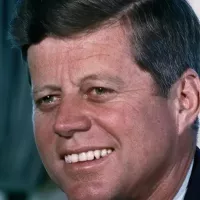
John F Kennedy JFK was the th U S President...
The United States of America is a federal republic located...
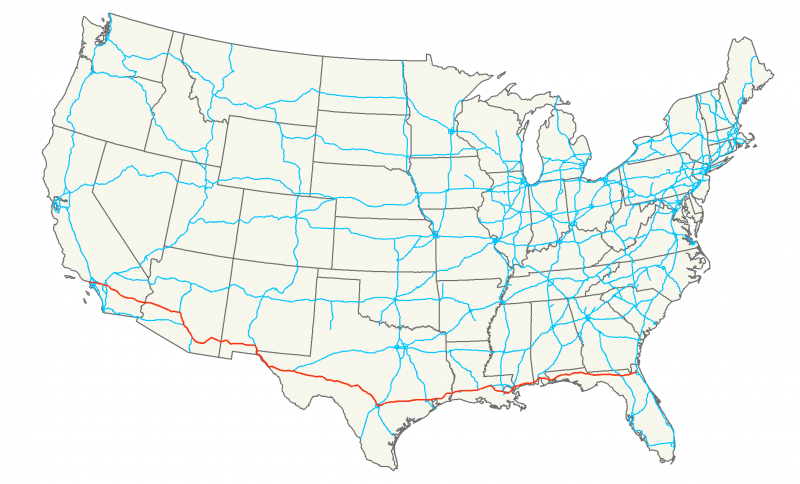
Interstate I- is the southernmost transcontinental highway in the United...
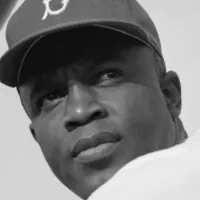
Jackie Robinson was an American professional baseball player who broke...
Japan is an East Asian island country situated in the...
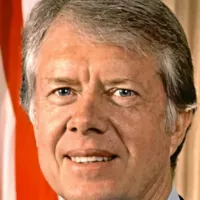
Jimmy Carter the th U S President - was a...
Trending

7 minutes ago Jimmy Butler shines as Warriors defeat Pelicans; Hield's performance in focus.

7 minutes ago Stephen Curry's Emotional Bond and Support for Draymond Green Amidst Challenges.
7 minutes ago TotalEnergies Partners to Provide Additional Equity for Mozambique LNG Project After UK, Dutch Pullout

7 minutes ago Tabitha Brown faces backlash, heightens security after Target boycott comments fallout.

8 minutes ago Aaron Wiggins seizes opportunity with OKC Thunder injuries, recovers from adductor issue.
8 minutes ago Barnes and Wallace shine: Named Defensive Players of the Month in NBA!
Popular
Aftyn Alyssa Behn is an American politician currently serving as...
Matt and Ross Duffer known as the Duffer Brothers are...

XXXTentacion born Jahseh Dwayne Ricardo Onfroy was a controversial yet...

Stranger Things created by the Duffer Brothers is a popular...

Lane Kiffin is an American football coach currently serving as...

William Franklin Graham III commonly known as Franklin Graham is...
